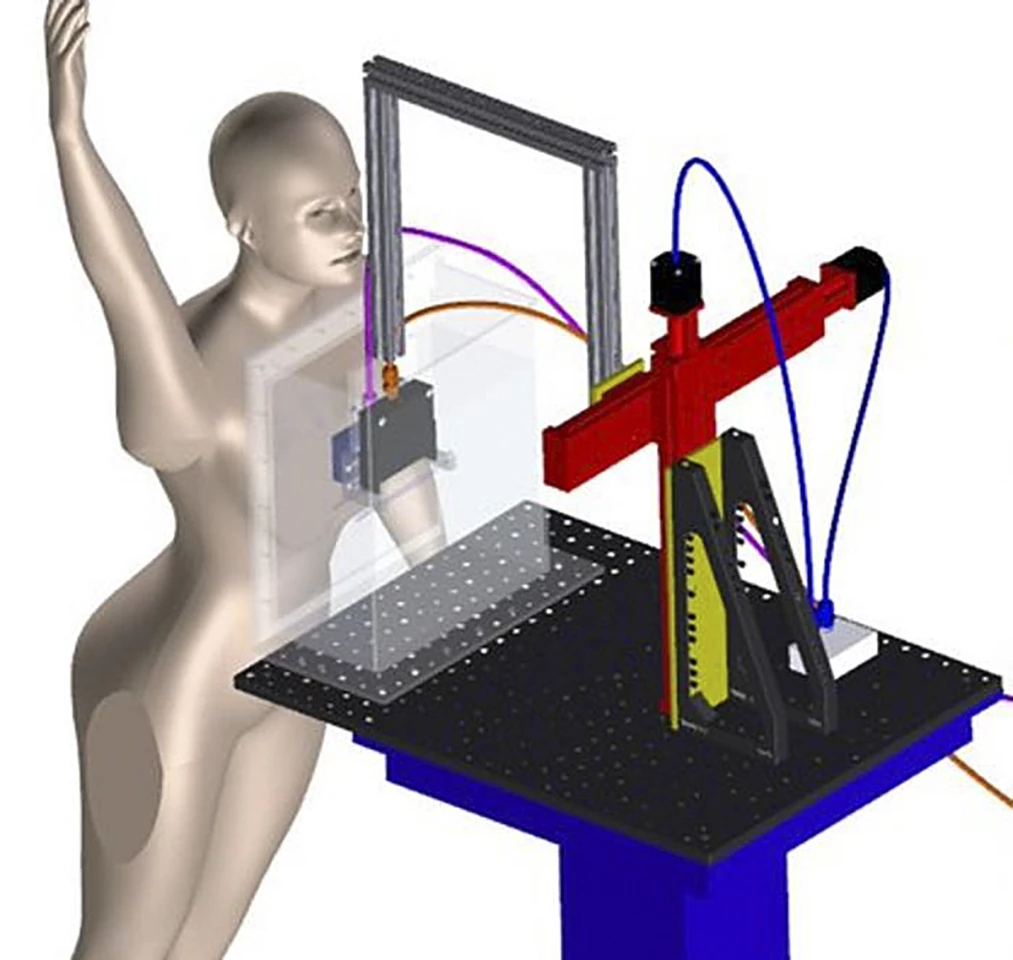Breast cancer screening tech has come a long way in recent years, with improvements in accuracy and convenience in new methods. Now, researchers at the University of Buffalo are hoping to make it even easier with a detection technique that only requires patients to press up against a window for a minute to get accurate results in 3D.
The team's detection system is dubbed OneTouch-PAT, referring to the automated dual photoacoustic and ultrasound imaging techniques used along with AI to deliver detailed breast tissue scans. The researchers' paper on this method appeared in the IEEE Transactions on Medical Imaging journal last month.
The new system was tested with 65 study participants, including 61 breast cancer patients and four people who did not have cancer. The researchers noted that their OneTouch-PAT system not only delivered clear 3D images of the participants' breast tissue, but also helped classify them into breast cancer subtypes that each have common patterns, like Luminal A, Luminal B and Triple-Negative breast cancer.

OneTouch-PAT leverages two imaging techniques for its scans. The first is photoacoustic imaging, in which laser pulses that cause light-absorbing molecules to heat up and expand are delivered into the breast tissue. This creates ultrasound waves that can reveal blood vessels often found growing in cancerous tissues, through an established imaging technique for mapping tissue.
Both scans are automatically combined and the process is repeated until the entire breast is mapped. The system then runs this imaging data through a custom-built deep learning network to generate a detailed 3D image of the breast. This happens in under a minute, and all the patient has to do is stand and press up against an imaging window.
That could pave the way for easier and more accessible breast cancer screening for women worldwide. Existing methods have their drawbacks: X-ray-based mammograms involve painful breast compression and display low sensitivity in dense breast tissue, and MRIs are expensive and can take up to an hour.
OneTouch-PAT could also rival more modern methods like the compression-free, CT scan-based Koning Vera system that can costs hundreds of dollars, and the Bexa system that involves both high-resolution elastography and B-mode ultrasound evaluation over the course of half an hour.
Of course, OneTouch-PAT will need to be developed further before it can be commercialized and made widely available. "More work is needed before it can be used in clinical settings, but we’re excited about OneTouch-PAT’s potential to augment current imaging methods," said Jun Xia, PhD, a biomedical engineering professor and corresponding author of the paper.
In that regard, the researchers plan to conduct more studies to spot benign lesions in scans, improve their data extraction methods, and add sensors and enhanced imaging tools for greater accuracy.
Source: University of Buffalo






